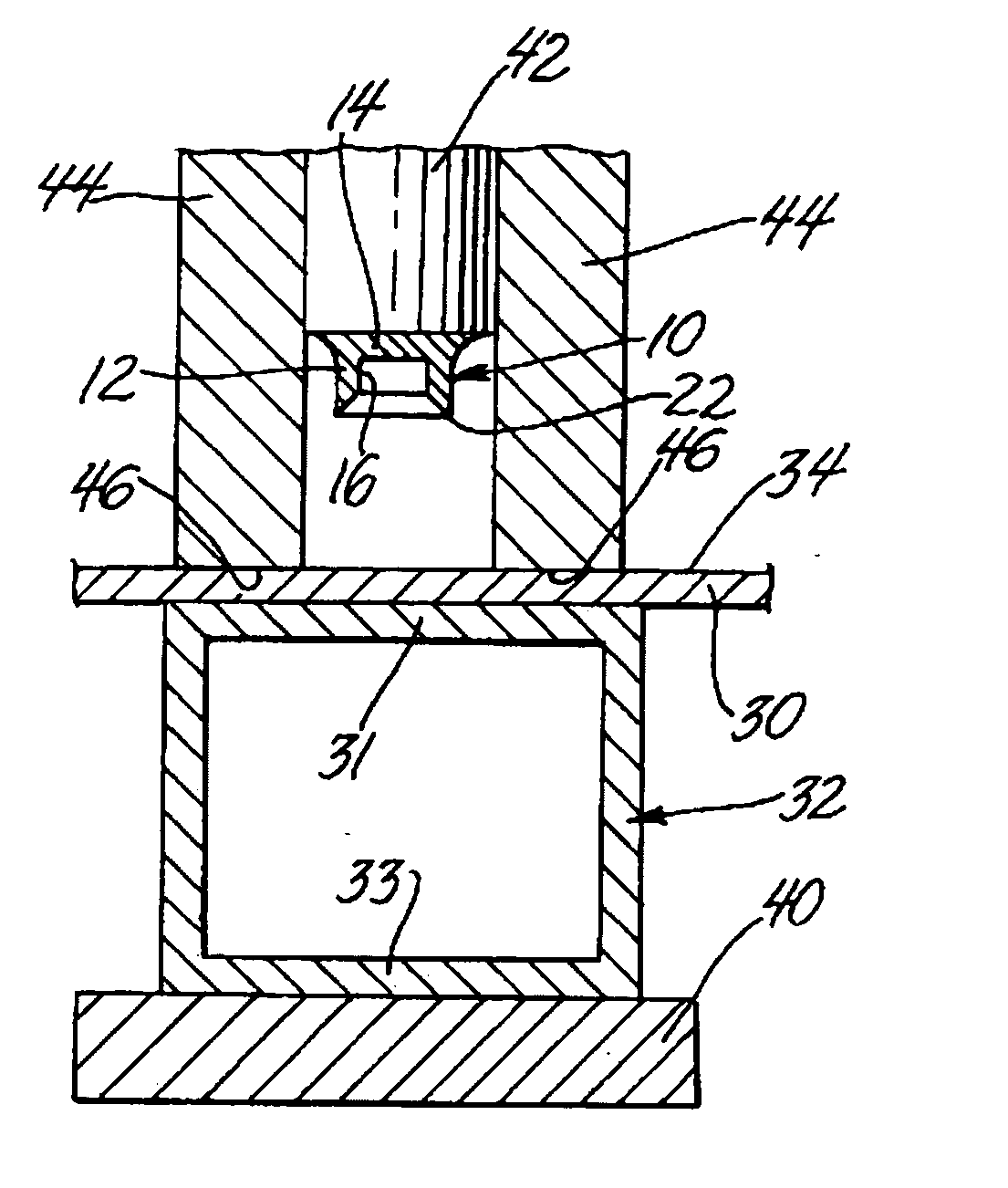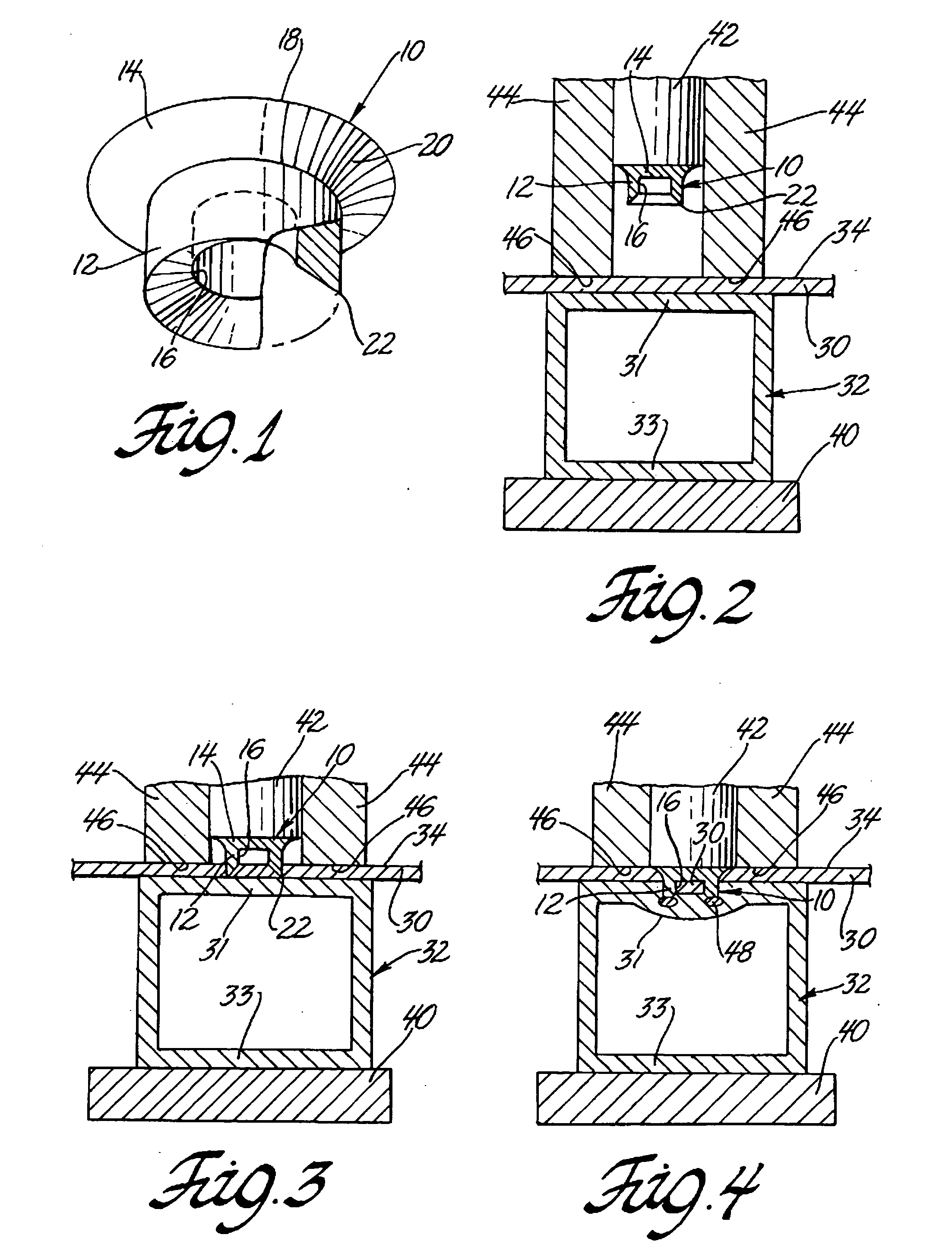Method of joining dissimilar materials
- Summary
- Abstract
- Description
- Claims
- Application Information
AI Technical Summary
Benefits of technology
Problems solved by technology
Method used
Image
Examples
Embodiment Construction
[0017] The present invention generally provides a method of joining dissimilar materials, such as a non-ferrous component to a ferrous component. More specifically, the present invention provides a method of joining a non-ferrous sheet-metal component to a ferrous metal tube, such as for use in automotive body assemblies. The present invention also contemplates the reverse scenario wherein a method is provided for joining a ferrous sheet metal component to a non-ferrous metal tube. The method of this invention uses features of self-piercing riveting practices and resistance spot welding methods to provide an improved method for joining dissimilar materials, which is particularly well suited to welding a sheet metal component to a tube with only single-sided access to the joining location. The present invention, however, also contemplates that the ferrous and non-ferrous components may be attached using only a weld joint, rather than the combination of a weld joint and mechanical fas...
PUM
| Property | Measurement | Unit |
|---|---|---|
| Force | aaaaa | aaaaa |
| Current | aaaaa | aaaaa |
| Electrical current | aaaaa | aaaaa |
Abstract
Description
Claims
Application Information
 Login to View More
Login to View More - R&D
- Intellectual Property
- Life Sciences
- Materials
- Tech Scout
- Unparalleled Data Quality
- Higher Quality Content
- 60% Fewer Hallucinations
Browse by: Latest US Patents, China's latest patents, Technical Efficacy Thesaurus, Application Domain, Technology Topic, Popular Technical Reports.
© 2025 PatSnap. All rights reserved.Legal|Privacy policy|Modern Slavery Act Transparency Statement|Sitemap|About US| Contact US: help@patsnap.com


